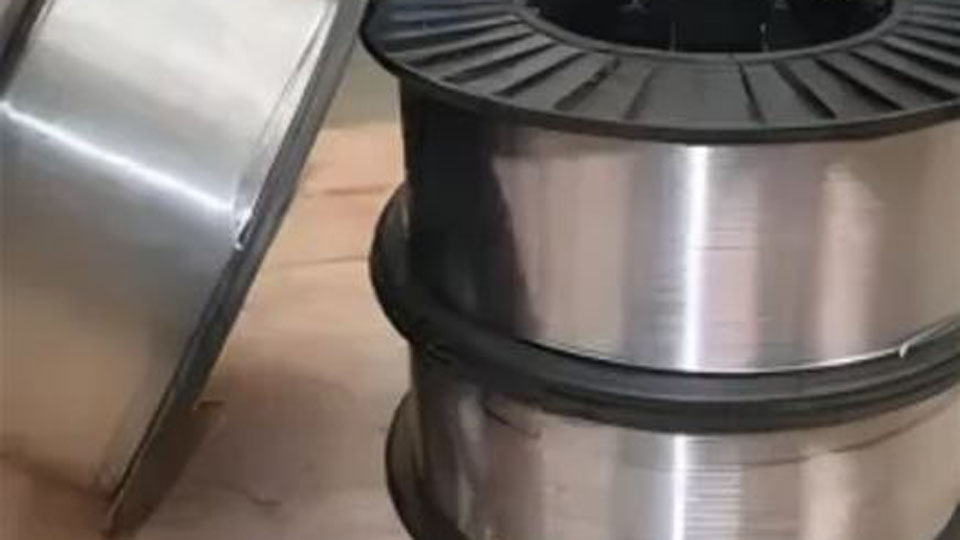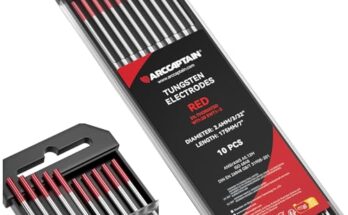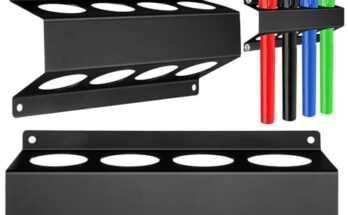When I first started welding aluminum, I quickly realized that it’s not as simple as welding steel. Aluminum behaves differently under heat, is more prone to contamination, and usually requires shielding gas to protect the weld from oxidation. However, flux core wire offers an alternative that eliminates the need for external gas.

Photos by crepow.en.made-in-china
Many welders, especially beginners, wonder if they can weld aluminum with flux core wire. The answer is yes, but it’s not as straightforward as welding mild steel.
Flux core welding aluminum comes with unique challenges, and using the right equipment, technique, and settings makes all the difference.
If you’re looking for a way to weld aluminum without relying on shielding gas, flux core welding might be your best option.
I’ll walk you through everything you need to know, from how it works to the best practices for getting strong, clean welds.
Can You Really Weld Aluminum with Flux Core Wire?
Yes, you can, but there’s a catch. Unlike steel, aluminum doesn’t have widely available self-shielding flux core wires. Instead, it requires a special type of flux-cored wire that produces its own shielding effect. This wire is not as common as the flux core wire used for steel, and it may not be available for every MIG welder.
Flux core welding is usually associated with FCAW (Flux-Cored Arc Welding), which is popular for steel because it allows welding without external gas.
Aluminum flux core welding is different. It’s more challenging, and the results may not be as clean as MIG or TIG welding with gas.
How Does Flux Core Aluminum Welding Work?
Flux core aluminum welding follows a similar process to MIG welding, but instead of using an external shielding gas, the flux inside the wire creates a gas-like shield when it burns. This helps protect the weld from oxidation, porosity, and contamination.
Here’s how it works:
- The flux inside the wire melts and releases a shielding effect.
- The wire continuously feeds into the weld pool, just like standard MIG welding.
- No external gas tank is needed, making it more portable and cost-effective.
- The flux creates slag, which must be removed after welding.
Equipment Needed for Flux Core Aluminum Welding
Since flux-cored aluminum wire is different from standard MIG wire, you need the right equipment and settings to get good results.
Welder Type
- A MIG welder with flux core capability is required.
- Make sure the machine supports DC electrode positive (DCEP) polarity.
Aluminum Flux Core Wire
- Choose self-shielding aluminum flux core wire (not common, so check with suppliers).
- Some brands offer flux-cored aluminum wire, but availability is limited.
Proper Welding Gun and Drive Rolls
- Use a Teflon or plastic liner to prevent the soft aluminum wire from tangling.
- Replace standard steel drive rolls with U-groove rolls to avoid crushing the wire.
Spool Gun (Recommended but Optional)
- A spool gun reduces wire feeding issues.
- Helps prevent the aluminum wire from kinking or bird-nesting.
Wire Diameter
- 0.035″ or 0.045″ diameter flux core aluminum wire is common.
- Use the right amperage settings based on thickness.
Safety Gear
- Auto-darkening welding helmet with proper lens shade.
- Heat-resistant gloves and clothing to protect against splatter.
Having the right setup is key to reducing issues like wire feeding problems, excessive spatter, and weak welds.
Best Techniques for Welding Aluminum with Flux Core Wire
Since flux core welding aluminum is trickier than steel, you need to follow the right techniques to get clean, strong welds.
Clean the Aluminum Thoroughly
Aluminum develops a thin oxide layer that melts at a much higher temperature than the aluminum itself. If you don’t remove it, it will interfere with the weld.
- Use a stainless steel brush dedicated to aluminum.
- Wipe with acetone or isopropyl alcohol to remove grease and oil.
Contamination is a major issue in aluminum welding, so clean metal = stronger welds.
Use the Correct Polarity
For flux core aluminum welding, you should use DC electrode positive (DCEP). This ensures better penetration and arc stability.
Control Heat Input
Aluminum conducts heat much faster than steel, making it easy to burn through thin sections.
- If the aluminum is thin (under 1/8″), use lower voltage and faster travel speed.
- For thicker aluminum, preheating to 300°F – 400°F can help reduce cracking.
Maintain Proper Travel Speed
- Too slow = excessive heat buildup, burn-through, and warping.
- Too fast = weak penetration and poor fusion.
- A steady, consistent speed helps maintain a smooth weld bead.
Use a Push Angle
- Use a push technique (10-15° angle forward) instead of dragging.
- This helps keep the arc ahead of the weld pool and reduces slag contamination.
Welding aluminum with flux core wire takes practice, but following these steps will improve your results significantly.
Common Problems and How to Fix Them
Even with the right setup, flux core aluminum welding comes with its own set of challenges. Here’s how to solve some of the most common problems.
| Problem | Cause | Solution |
|---|---|---|
| Excessive spatter | Too much voltage or wire feed speed | Adjust settings, use correct wire size |
| Weak penetration | Low heat input | Increase amperage, preheat thick aluminum |
| Porosity in weld | Contaminants or moisture in metal | Clean metal thoroughly, use fresh wire |
| Wire feeding issues | Wrong drive rolls or tension | Use U-groove drive rolls, reduce tension |
| Burn-through | Too much heat on thin metal | Reduce voltage, use faster travel speed |
Welding aluminum without shielding gas requires extra care, but solving these issues will help you get cleaner, stronger welds.
Pros and Cons of Welding Aluminum with Flux Core Wire
While this method is a good alternative to gas welding, it does have limitations.
Pros
- No need for shielding gas, making it more portable.
- Works better outdoors and in windy conditions.
- Suitable for repair work and non-structural applications.
Cons
- Limited wire availability, making it harder to find flux-cored aluminum wire.
- Produces slag, requiring extra cleanup.
- Not as strong or clean as TIG or MIG with gas.
For DIY welders, field repairs, or those on a budget, flux core aluminum welding is a useful alternative. However, if you need high-quality welds for structural applications, gas-shielded MIG or TIG welding is a better choice.
Conclusion
Welding aluminum with flux core wire is possible, but it’s not as simple as welding steel. Since aluminum is more delicate and conductive, it requires special flux core wire, the right welder settings, and proper preparation.
While this method is useful for outdoor and remote welding, it’s not a perfect substitute for MIG or TIG welding with gas. The welds may not be as strong or clean, but with the right technique and practice, you can achieve decent results.
If you’re looking for a gas-free aluminum welding option, flux core welding is worth trying. Just make sure to clean your aluminum well, use the right polarity, and control heat input for the best results!
FAQs
Can I use regular flux core wire to weld aluminum?
No, regular flux core wire is for steel. You need special aluminum flux core wire.
Do I need a spool gun for flux core aluminum welding?
A spool gun is recommended to prevent wire feeding issues, but not always required.
Why is my aluminum weld full of holes?
Porosity is usually caused by contaminated metal or moisture in the wire. Clean thoroughly and store wire properly.
Is flux core aluminum welding as strong as MIG or TIG?
No, MIG and TIG with gas produce cleaner, stronger welds. Flux core is best for non-structural work.
What’s the best alternative if I can’t find flux core aluminum wire?
Using MIG welding with a spool gun and shielding gas is the next best option.


![Flux Core Aluminum Rods[1/16''x40''], Flux Core Aluminum Welding Rods, Soldadura De Aluminio, Aluminum Welding Rods, Aluminum Brazing Rods with Flux, Aluminum Stick Welding Rods. (40Inch)](https://m.media-amazon.com/images/I/41e-gqZOWxL._SL160_.jpg)




